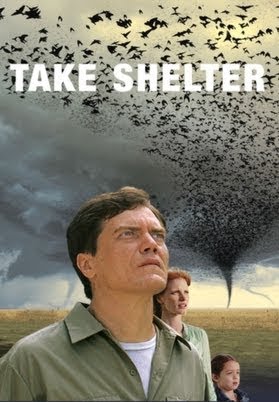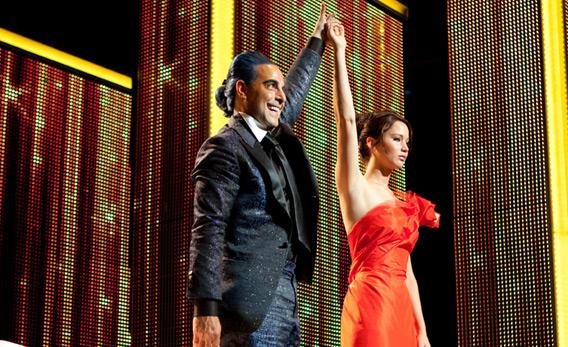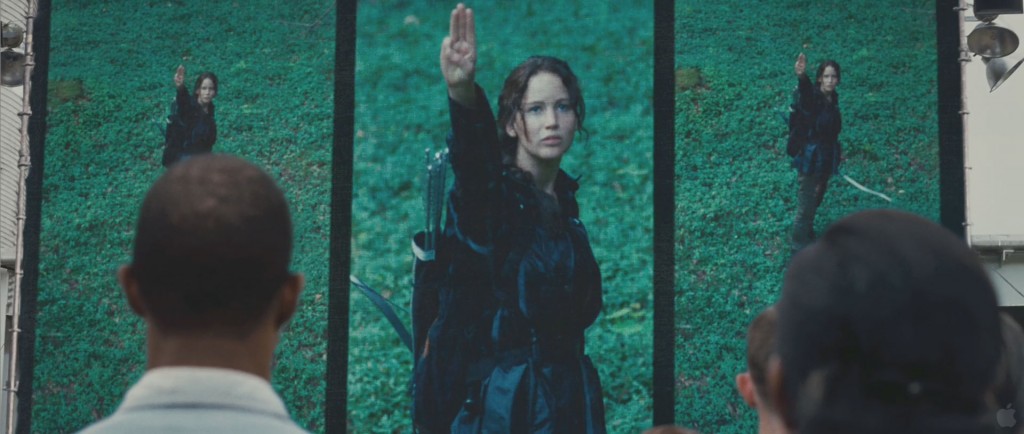The Help illustrates the tense racial divide in 1960’s Mississippi through the lens of Black maids who take care of the children and homes of rich White families. Emma Stone plays Skeeter, a recent college graduate and aspiring writer who wants to tell the world a new story; the stories from the perspective of “the help.” Viola Davis and Octavia Spencer play the maids, Aibileen and Minny, who risk dangerous backlash to share their experiences with Skeeter. Despite its Oscar publicity, The Help sometimes feels like a Civil Rights lesson for the Hallmark Channel and many of its characters come across as one-dimensional caricatures (Bryce Dallas Howard being the most obvious example). However, I was engaged enough by the story and liked most of the performances (especially Davis as Aibileen) to give this film a mild recommendation.
The Grey (2011) – Mark it 5.
After their plane crashes in the middle of nowhere, a rugged badass (Liam Neeson) leads his band of one-dimensional stock characters through the Alaskan wilderness. Director Joe Carnahan does an adequate job creating suspense as a pack of extremely territorial (and fake-looking) wolves hunt them down. The harsh landscape acts as its own compelling character from beginning to end. However, the same cannot be said for The Grey’s actual characters. Neeson has fun with his new action star status but everyone else in the movie a bit annoying. Overall, I felt indifference toward these characters and sometimes even cheered for the wolves, which is not what one looks for in a survival movie. Despite its cool action and suspenseful elements, The Grey began to lose me when its sub-par screenplay infused some emotion, and there are too many of those weaker moments.
Mysterious Skin (2004) – Mark it 8.
Never have I seen the topic of child molestation portrayed so painfully frank and powerfully effective than in Gregg Araki’s Mysterious Skin. The film follows the lives of two boys, Neil and Brian, from 9 years old to 19 after sharing a traumatic experience. For Neil (Joseph Gordon-Levitt), the abuse is almost a fond memory that led him down dangerous paths with his sexuality, as a homosexual prostitute during the height of the AIDS epidemic. Neil’s rose-colored glasses dim as his profession’s dangers mount. However, the five hours of abuse are a void in Brian’s (Brody Corbet) memory. That void has prevented Brian from moving on in life until he knows what exactly had been done to him. Brian’s search for answers and Neil’s reflections on the past eventually lead to their reunion, a haunting but beautiful scene. Its subject matter makes Mysterious Skin a tough film to sit through, but it is one that stayed with me for hours after the credits rolled.
Happiness (1998) – Mark it 6.
Happiness is Todd Solondz’s dark indie comedy about seemingly normal family that is anything but that when one looks a little closer. Among the giant cast of characters is a perverted prank phone caller, a child desperate to reach puberty, a lonely neighbor with a terrible dark secret, a trio of sisters who hide their depression to keep up appearances, and a father who is way too interested in his son’s friends (to put the most disgusting act imaginable nicely). Happiness is such a weird film that is good at what it sets out to accomplish (shocking wit), but it can be difficult to spend time with these people. I think this is a better than average film but I cannot recommend it for just anyone to watch. It has a look of a normal family comedy, but this is very disturbing stuff so prepare yourself before seeking it out. On a side note, it was fun to see Jared Harris (Man Man’s Lane Pryce) in a small but memorable role as a Russian cab driver who sparks an ill-fated romance with one of the main characters.
Being Elmo (2011) – Mark it 7.
As the title suggests, this documentary is about the puppeteer who gives life to a piece of fabric and foam named Elmo, Kevin Clash. Though it does cover the puppeteering basics, Being Elmo goes further than how Clash became the childrens' icon. It is an uplifting story of an artist who finds a passion and follows that dream to unimagined success. Clash developed a love for the Muppets he saw on Sesame Street as a child, and spent his teen years practicing his craft. His talents took him from a performing at Baltimore day cares and local TV stations to gigs on Captain Kangaroo and Labyrinth, until he finally joined the Jim Henson team on Sesame Street (where Elmo was born). I loved the symmetry between Henson, and his collaborators, mentoring Clash back in the ‘70s and ‘80s with Clash now mentoring the next generation of puppeteers. Turning these inanimate objects into personalities that connect with millions of kids around the world is a beautiful thing, and Being Elmo lovingly portrays that.
Revisiting my favorite Chaplin film
only proved to me that it is a complete masterpiece.
Chaplin’s Tramp character is his usual down-on-his luck self who falls in love with blind girl who sells flowers on the street. A chance car door slam leads the girl to
believe the Tramp is a millionaire.
Afraid of revealing his true self, the Tramp embarks on a series of
adventures to reinforce the charade and win her heart. This film has hilarious set
pieces from beginning to end, but every sequence is integral to the plot. The comedy make you laugh, but also resonates
deeply as the innocent Tramp finds himself in all sorts of predicaments for the
sake of being able help the girl he has fallen in love with. He will put himself through anything, all in
the hope that the girl will love him regardless of whether he is the
millionaire he pretends to be or the Tramp he really is. City
Lights is a romantic comedy in which both elements of the genre are
beautifully executed; it is a perfect film.
(I may have to revisit City
Lights some time in the future for a more thorough review)
Take Shelter (2011)
– Mark it 7.
Michael Shannon’s slow descent into madness in Jeff Nichols’
Take Shelter is mesmerizing to
watch. Shannon’s character, Curtis,
seemingly lives a good life in rural Ohio with a beautiful and loving wife
(Jessica Chastain), his deaf daughter, and a job with good health benefits to
get his daughter a cochlear implant. All
this is jeopardized when Curtis begins to have dreams and hallucinations of
apocalyptic storms. I appreciated the
unique way that Take Shelter approaches
paranoid schizophrenia, as Curtis calmly recalls his family history with the
illness, researches his symptoms, and seeks medical advice. But as his illness worsens, and almost all of
his energy is given to rebuilding the storm shelter in his yard, that “good
life” Curtis has in the beginning begins to disintegrate. This is a great film that tells a unique
story, includes interesting visuals, and some great performances; the scene
where Curtis finally cracks at a Lions Club fish fry is worth the price of
admission alone.
As writer and actor, Jason Segal tries his best to lead
Kermit, Miss Piggy, Fozzie, and the gang on their big comeback in The Muppets. And overall, their comeback attempt is very
successful. Like the best Muppet
moments, there are plenty of laughs for the kids and the adults, a plethora of
celebrity cameos, and many catchy tunes.
While the plot isn’t always the most necessary thing with the Muppets,
this installment has Segal and his Muppet brother (and the world’s biggest
Muppets fan), Walter, convince Kermit to reunite the troupe and save their old
studio from the evil oil tycoon, Tex Richman (Chris Cooper). I smiled a good deal from the start of The Muppets until its end and enjoyed a lot of the songs (especially “Man or Muppet,” which was in my head
all day). However, Chris Cooper’s rap
was painfully bad. Lastly, I want to
recognize Bret McKenzie's great work for putting his "Flight of the
Conchords stamp" on these songs (and for winning an Oscar).





















